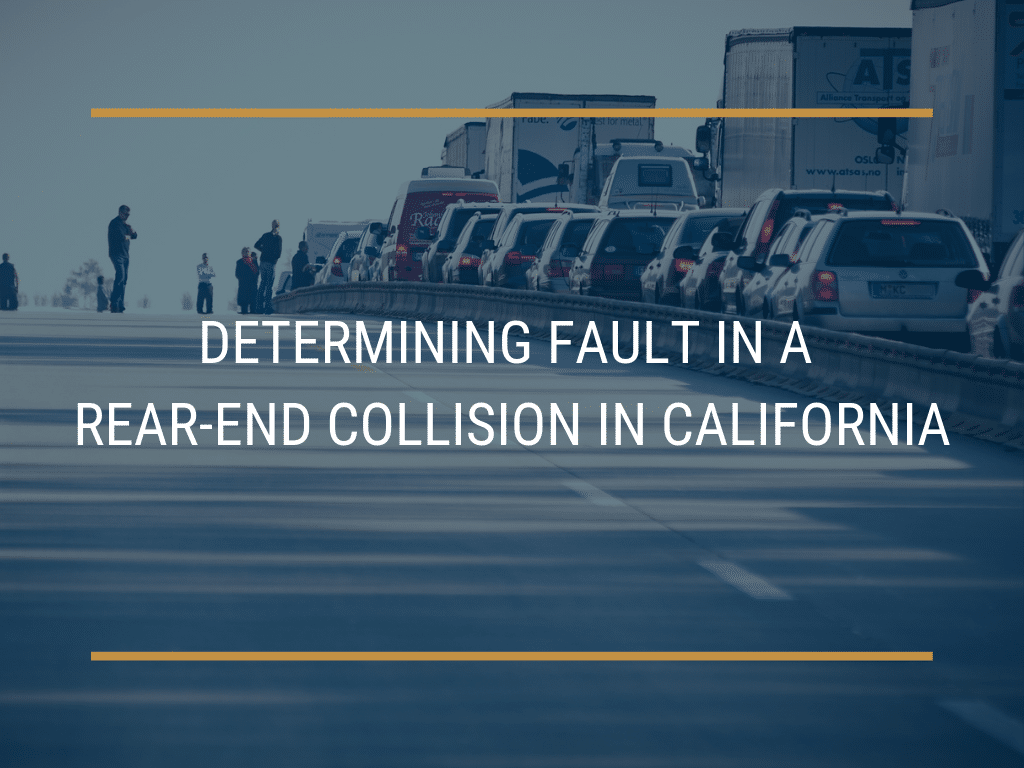
Rear-end collisions are among the most common types of wrecks. This type of accident happens when one vehicle strikes another from behind in the same lane of traffic. In a large percent of rear-end collisions, the accident is caused by the negligence of the driver that is behind the other vehicle. There’s a good chance that this driver’s failure to stop the vehicle when necessary is the cause of the wreck. While this is frequently the case, there are times when other factors are involved
How is fault determined in a rear-end collision in California? In order to determine who caused the accident, evidence has to be evaluated such as skid marks and damage to vehicles. Witness statements are considered and experts may need to reconstruct the details of the accident such as time of day and weather conditions.
Driving Behavior That is Considered Negligent
After a rear-end collision, an investigation will be done to try to determine if one driver was negligent. The concept of negligence refers to acting in a way that differs from what another reasonable person would do in similar circumstances. All drivers are expected to act in ways that are reasonable and would not cause harm to other people.
Some ways in which drivers may be negligent include:
- Texting and driving or being distracted by other things such as GPS, radio, eating or conversing with passengers
- Failing to pay attention to what’s ahead of them in the road including any hazards
- Driving faster than is safe under current conditions, which includes failing to slow down when weather is treacherous or visibility is poor
- Not yielding the right of way
- Not maintaining control of the vehicle
- Driving too close to the vehicle in front of them
Can the Driver in the Front Cause a Rear-End Collision?
It may seem pretty clear that a rear-end collision is caused by the driver in the back driving too fast or not paying attention, but there are times that the driver in the front shares all or part of the responsibility for a rear-end collision. Some examples include:
- The vehicle’s brake lights didn’t work, making it impossible for the car in the back to realize it was stopping or slowing down
- The driver in the front suddenly shifted into reverse
- The vehicle in the front breaks down and the driver fails to turn on hazard lights
- There is a multiple car collision
- The driver of the leading vehicle deliberately tries to get hit
- They are driving while under the influence of substances
In most cases, it’s likely that the driver in the back shares at least part of the responsibility for the accident. Drivers are expected to pay attention to what’s ahead and to maintain a safe distance between them and the vehicle in front of them so that they are able to stop if something unexpected happens.
When You’re Injured in a Rear-End Collision
Rear-end collisions can jolt the body and cause serious injuries, some of which may continue to impact your life on a long-term basis. If you have been injured in a rear-end collision caused by someone else’s negligence, you may be entitled to compensation. Depending on the severity of your injuries, this compensation may cover a variety of things including medical bills, lost wages, lost earning capacity and pain and suffering.
It’s a good idea to have an experienced personal injury attorney review the facts of your case to see if you should file a personal injury lawsuit. Contact Kuvara Law Firm by filling out the form on this page and we will get back to you to schedule a free consultation.
Related Readings:
- Emergency Room Vs Urgent Care – Which is Better?
- What Does California Being A “Fault” Car Insurance State Mean?

